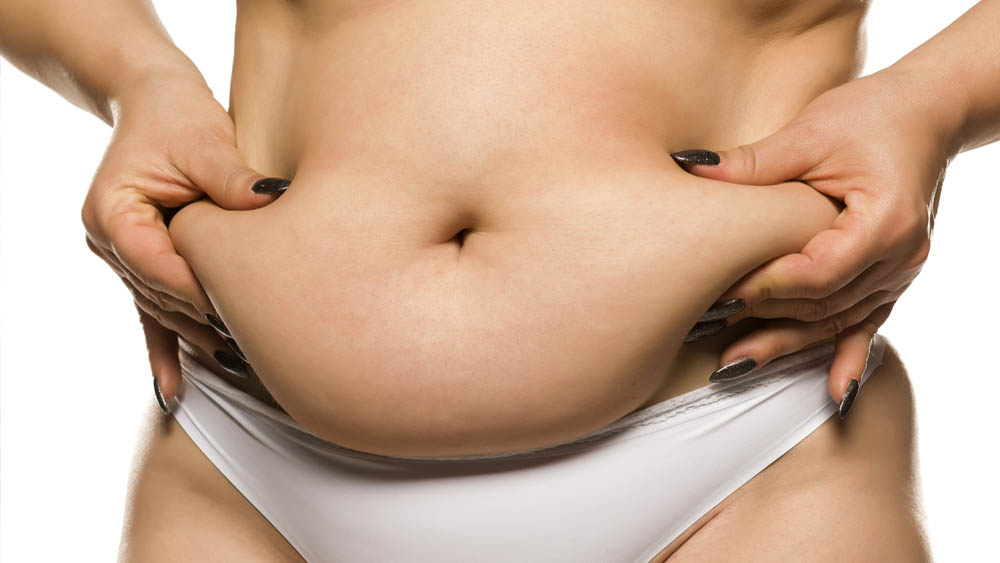Lipedema is a frequently misunderstood and under-diagnosed condition which causes the abnormal accumulation of fatty tissue in specific parts of the body, typically the legs and arms. It predominantly affects women and can cause significant pain, discomfort and emotional distress.
Since the explosion of Lipedema awareness in the past couple of years, a common question keeps arising: Can you get lipedema in your stomach? I’ll attempt to shed some light on this topic, exploring the nature of Lipedema, the facts and the condition’s typical manifestations.
Understanding Lipedema
First of all, let’s clarify what constitutes Lipedema – it is known for its symmetrical buildup of painful fat, primarily in the legs and arms.
The condition usually develops or worsens during periods of hormonal change, such as puberty, taking hormonal contraception, pregnancy or menopause, suggesting a hormonal component to its pathology. Despite its distinct characteristics, there is still a lot of confusion and overlap with other disorders, particularly obesity and Lymphedema.
Lipedema and Abdominal Fat
The question of whether you can get Lipedema in your stomach is significant, as it helps differentiate Lipedema from other conditions like obesity, where fat accumulation is not limited to specific areas.
Generally, most Lipedema surgeons/specialists believe that Lipedema does not directly affect the stomach. They believe the typical pattern of Lipedema involves the legs, thighs, bum, hips and arms, often stopping at a distinct line just below the waist.
However, women with Lipedema can still gain non-Lipedema related fat in the abdominal area, especially if they are overweight/obese or going through menopause. This can add further to the confusion and complexity in diagnosing and managing the condition.
*It’s important to note that various Lipedema surgeons and specialists do believe that Lipedema can affect the stomach/abdominal area, especially in the latter stages, and carry out surgeries to remove this tissue. It’s clear that due to the differing opinions surrounding this topic, it is an area that needs much more research in the coming years.
Distinguishing Lipedema from Other Conditions
It’s important to distinguish between Lipedema and other types of fat accumulation for appropriate treatment and care:
- Obesity: Fat is generally distributed more evenly across the body, including the stomach area.
- Lipedema: Fat accumulation is typically symmetrical and painful, mainly occurring from the waist down to the ankles, the arms and it spares the feet.
- Lymphedema: Caused by lymph fluid retention and often presents as swelling in one or more limbs, potentially including the torso but not specifically linked to fat accumulation.
Diagnosis and Management
If you suspect that you have some of the symptoms of Lipedema, always consult with a healthcare professional who is familiar with the condition. This is usually a vascular specialist or Lymphedema nurse.
Diagnosis is generally made through clinical examination and patient history. While there is currently no cure for Lipedema (hopefully we’ll find one, one day!), several management strategies can alleviate symptoms:
- Compression therapy: Regular use helps to reduce swelling and pain.
- Manual lymphatic drainage: A specialised type of massage that promotes the drainage of lymph fluids.
- Exercise: Although sometimes challenging, gentle exercises like swimming or walking can help manage symptoms.
- Diet: While no specific diet can cure Lipedema, maintaining a healthy weight and eating foods that don’t cause inflammation can alleviate symptoms. Many women with Lipedema follow the principles of an anti-inflammatory or a keto diet.
- Surgical options: Lymph sparing liposuction might be considered to remove Lipedema fat, particularly when it severely affects quality of life.
So, Can You Get Lipedema in Your Stomach?
While some specialists within the Lipedema community are adamant that you cannot get Lipedema specifically in your stomach or abdomen, others believe the complete opposite.
It is clearly an area of research that needs more attention, us ladies with Lipedema would benefit massively for some clarification on this topic.
In any case, understanding the symptoms, nature and typical patterns of fat distribution in Lipedema can help in distinguishing it from other conditions, ensuring early diagnosis and appropriate treatment.
If you’re currently dealing with some symptoms or concerns surrounding fat distribution in your body, reach out to a healthcare provider skilled in diagnosing and managing Lipedema. Click here to take a look at our Lipedema specialist directory, all of these professionals are knowledgeable about Lipedema and can provide a proper diagnosis.
Disclaimer: My blogs talk about Lipedema, diet, surgery and much more. I’m talking from my point of view to help women, and remind them they are not alone. I am not a medical professional, so the content above is from my own perspective with research I have done into the topic. It’s not meant as medical advice, you should always consult your doctor or a specialist for both your diagnosis, and a treatment plan.


